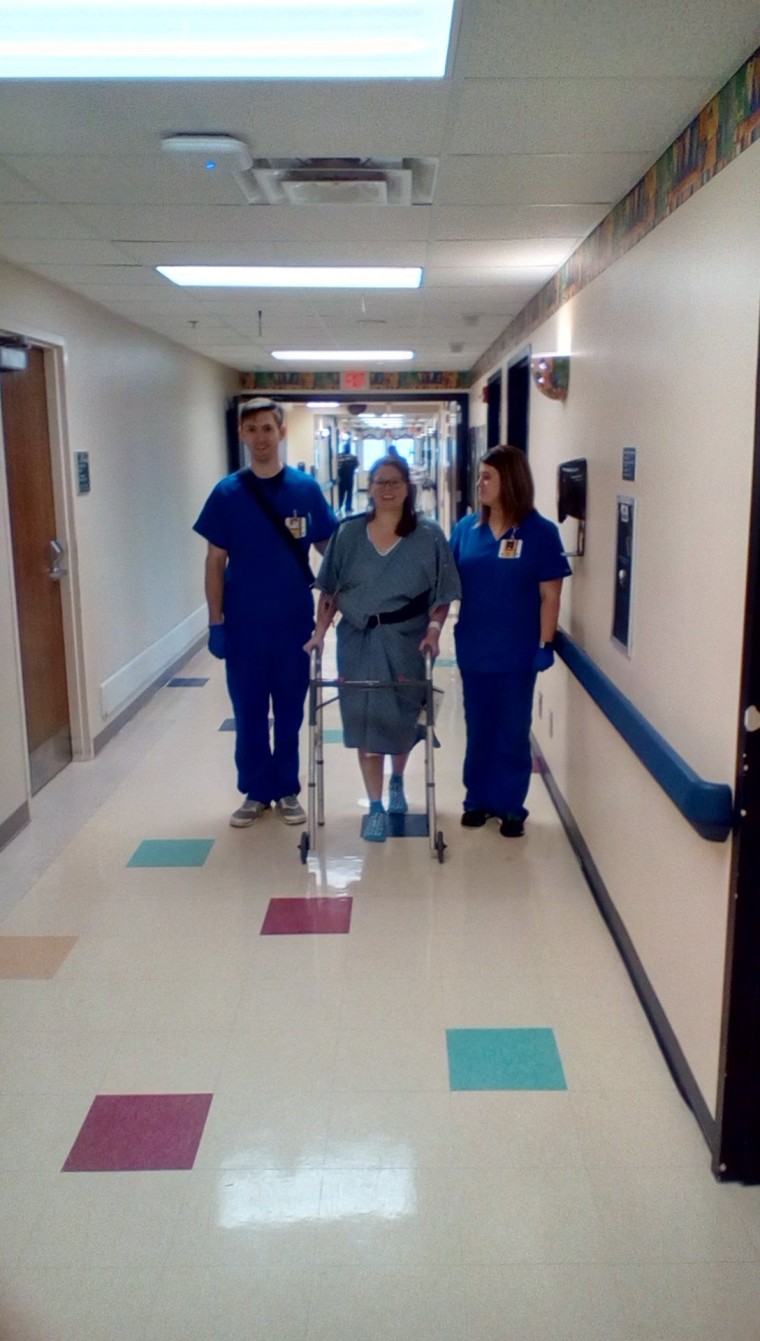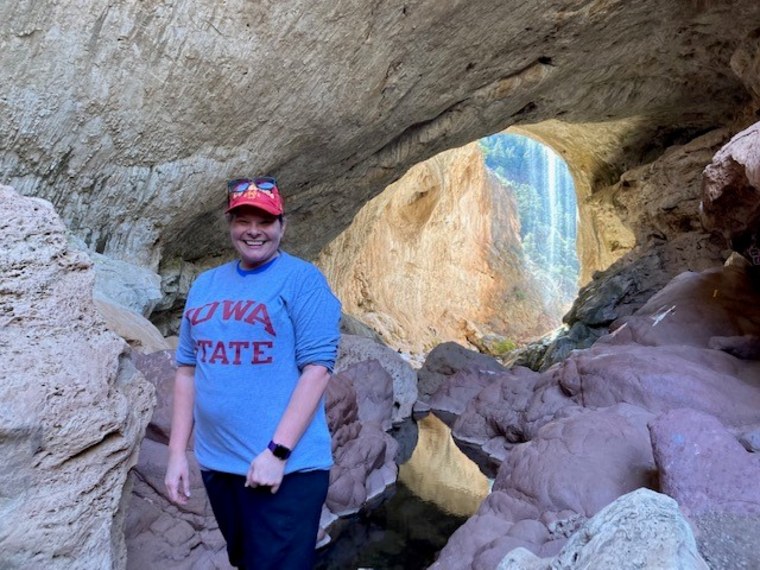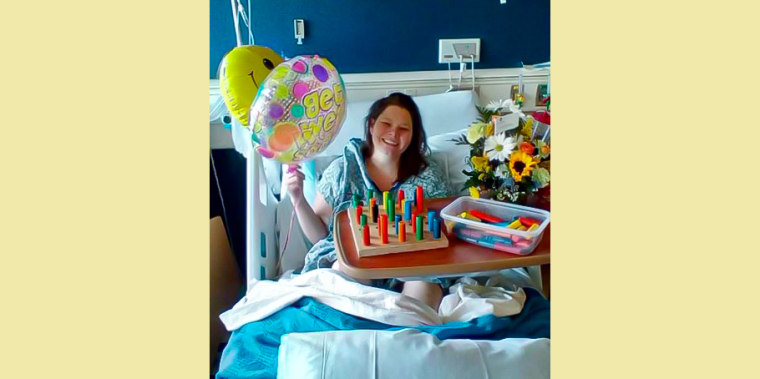After a meeting at work, Deborah Martinez, then 36, struggled to speak.
“I could tell that my speech was slurred because I asked my colleague,” Martinez, now 41, from Athens, Georgia, tells TODAY.com. “I’m a chronic migraine (sufferer) and I just thought I was having a bad migraine headache that day.”
But Martinez’s co-worker knew exactly what was happening — Martinez was having a stroke.
“She wasted no time in calling 911,” Martinez says. “I don’t know what would’ve happened if she had not been there at that moment. My guess is that I would have been passed out on the floor of my office and nobody may have seen me.”
A co-worker’s help leads to quick treatment
When the slurring began, Martinez didn’t, at first, realize how serious it was. For much of her life, she experienced migraines and thought perhaps this was a sign of a bad one starting. But her co-worker’s mom recently experienced a stroke. When Martinez asked if she was slurring her speech, her co-worker knew to call for help immediately.
“The paramedics arrived to my workplace within 15 of the onset of my stroke and they got me to (a local hospital),” she says. “They started tPA immediately within 40 minutes of onset of my stroke.”
The treatment she first received, tPA, otherwise called, tissue plasminogen activator, is a medication known as a “clot buster.” If it’s used within the first three hours of a stroke it breaks up the clot and boosts blood flow to the brain, according to the National Institute of Neurological Disorders and Stroke. While that helped Martinez, she still needed to undergo a mechanical thrombectomy, a procedure where doctors remove the clot via minimally invasive surgery.
“I did not know I was having a stroke until it was all done and over and I was recovering in the ICU,” she says.
Martinez doesn’t have a family history of stroke and doctors were unable to uncover why she had one.

“We don’t have any answers why,” she says. While Martinez received prompt treatment, she still experienced lingering symptoms from the stroke. The stroke occurred on her right side, meaning the left side of her body was impacted.
“I was having trouble being able to stand and walk,” she says. “I was having some trouble with my gait and because of my age, and being in my 30s, we wanted to make sure I had the best chance of full recovery.”
For about two weeks after her stroke Martinez underwent physical and occupational therapy in an in- patient setting to recover. In total, she did six weeks of therapy.
“They would have me do typical things — I’m a single woman who had to come back to my apartment on my own — so things, such as being able to fold laundry and being able to lift things over my head,” she says. “I was very fortunate as I made a full recovery pretty quickly.”
Recognizing the signs of a stroke
There are two types of stroke — ischemic or hemorrhagic.
“Ischemic stroke … that’s where there can be a large or small vessel in the brain occluded and the portion of the brain supplied by that vessel is starved for oxygen and nutrients and the tissue begin to function abnormally and then ultimately can go on and die,” Dr. Neil Woodall, a neurosurgeon at Georgia Neurological Surgery & Comprehensive Spine tells TODAY.com. “Hemorrhagic strokes, they’re usually related to high blood pressure but can be related to other things like aneurysms.”
Ischemic stroke accounts for about 85% of stroke, he says, and while it is often considered a disease of old age, that’s not quite accurate.
“There certainly are conditions that can predispose people to a stroke ... in younger patients,” he says. “Some people are born with deficiencies that can make the blood more prone to clotting.”
Young people with clotting disorders can be more likely to experience stroke. He also adds that younger patients often have a family history for stroke or have heart conditions that cause irregular heartbeats that can contribute to stroke. Knowing the signs of stroke can help people of any age receive quick treatment. They spell out the acronym BE FAST:
- B: Balance
- E: Eye such as abnormal eye movements, double vision
- F: Facial drooping
- A: Arm or limb weakness on one side
- S: Speech changes such as slurring
- T: Time is brain
“We know that every 15-minute delay in their treatment drastically increases their risk of death, disability and increase the risk of procedural complications,” Woodall says.
Woodall treated Martinez, performing his first thrombectomy on her. When clot busters are not enough to break up the clot, doctors perform a minimally invasive procedure where doctors go through an artery in the groin or wrist to remove the clot.
“The goal is to get that vessel open,” he says. “Historically it has been effective.”
Woodall says that having a relationship with a primary care doctor can help people understand their personal risks for stroke and reduce them. Doctors can help lower high blood pressure and cholesterol with medications and lifestyle changes. Quitting smoking and regular exercise can also help.
“The most important things are controlling modifiable risk factors,” he says.
Five years after stroke
It’s been five years since Martinez experienced stroke, and she has been healthy since.
“I’m doing really well and I’m thankful,” she says. “I will say that I exercised a lot before my stroke, but I don’t miss any (days) anymore. Every day I get at least 30 minutes a day.”

Martinez is involved in raising awareness of Get Ahead of Stroke’s campaign “Survive Stroke Week,” May 15-19, an effort to increase awareness of small things people can do to survive stroke. And, she stresses the importance of quick action if it seems someone is experiencing stroke.
“My co-worker was right there, and she did everything correctly,” she says. “That’s why I’m here today.”
